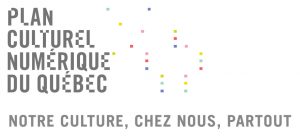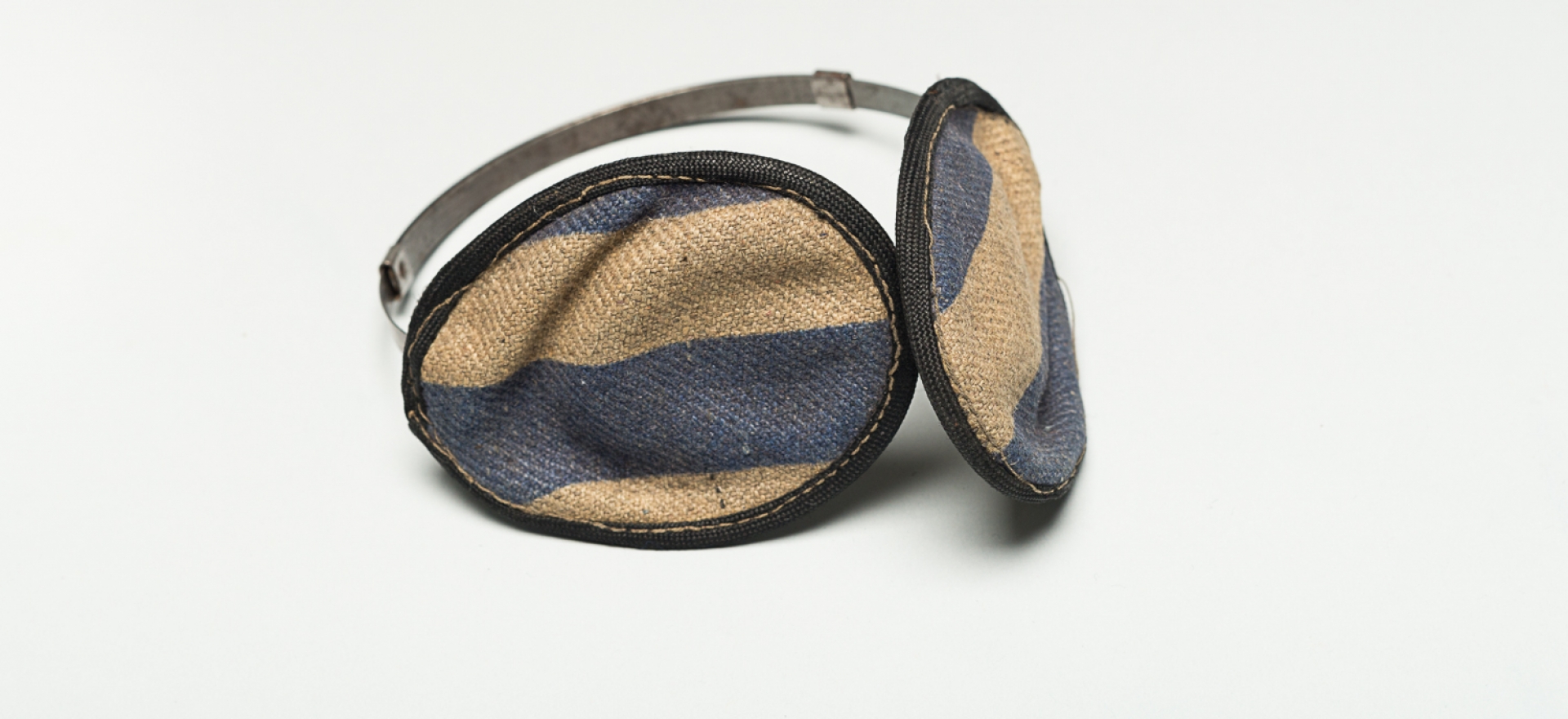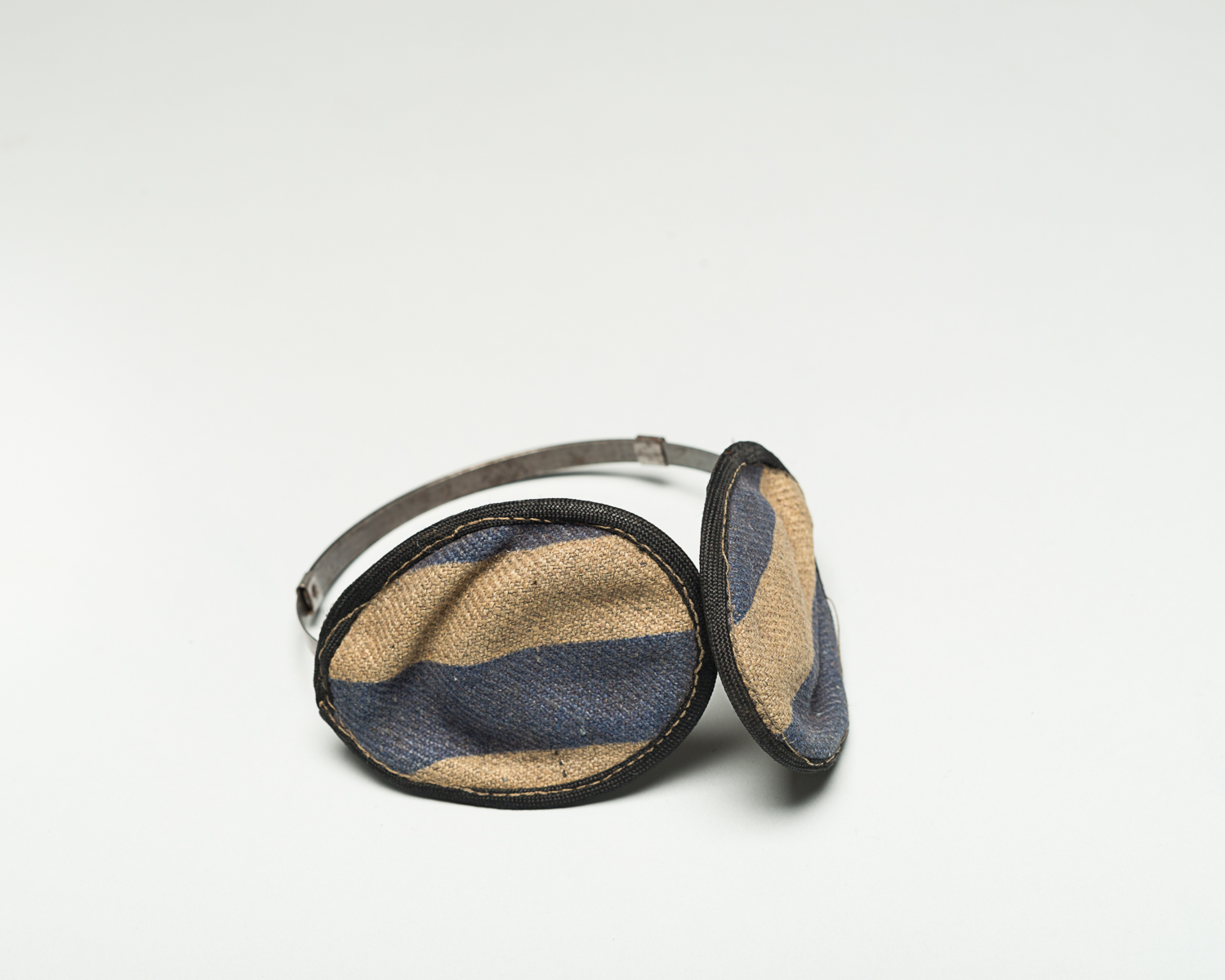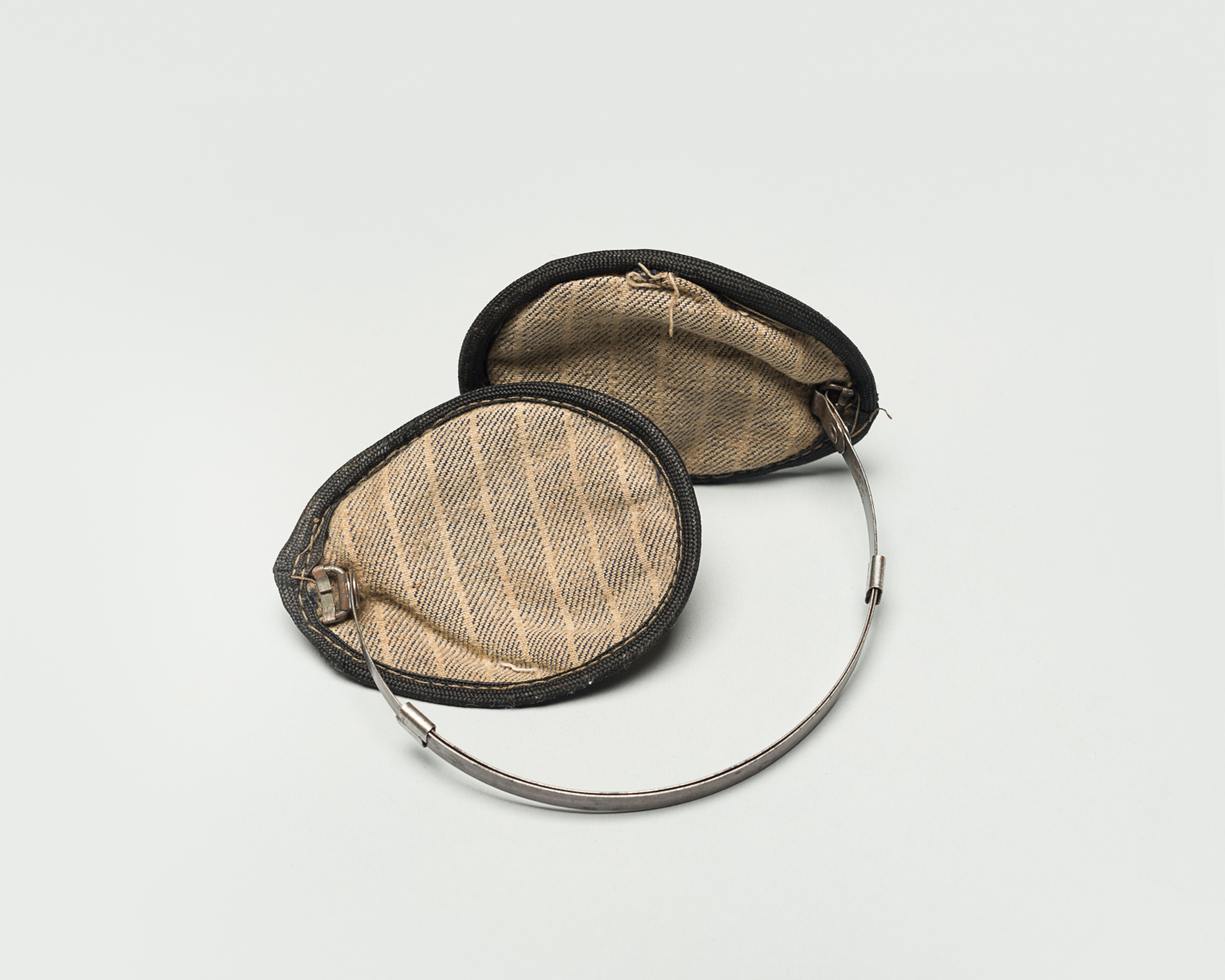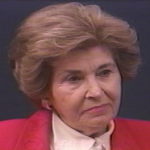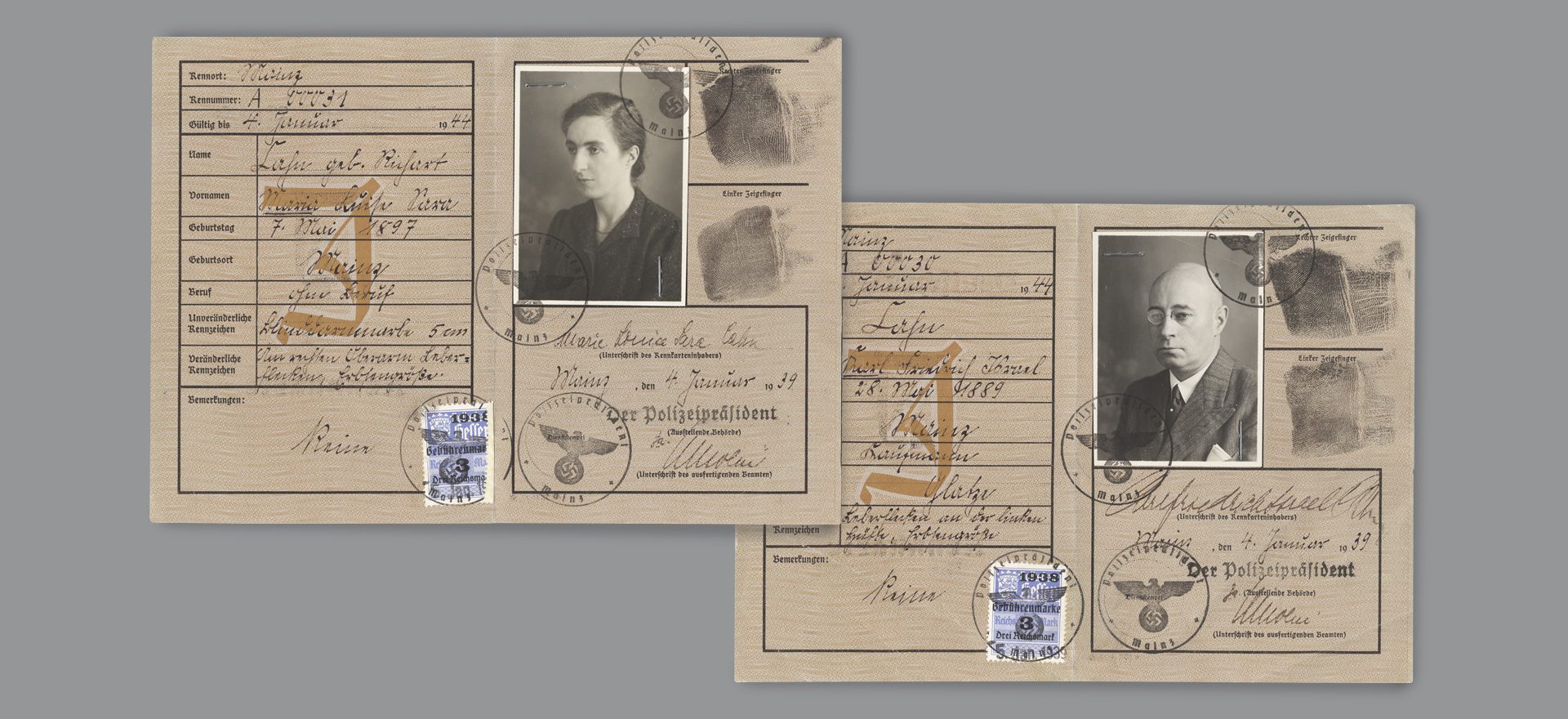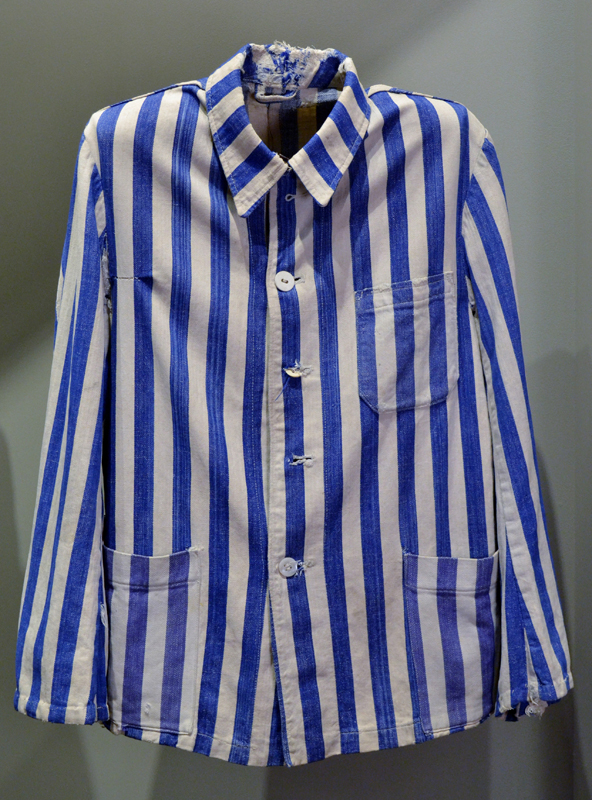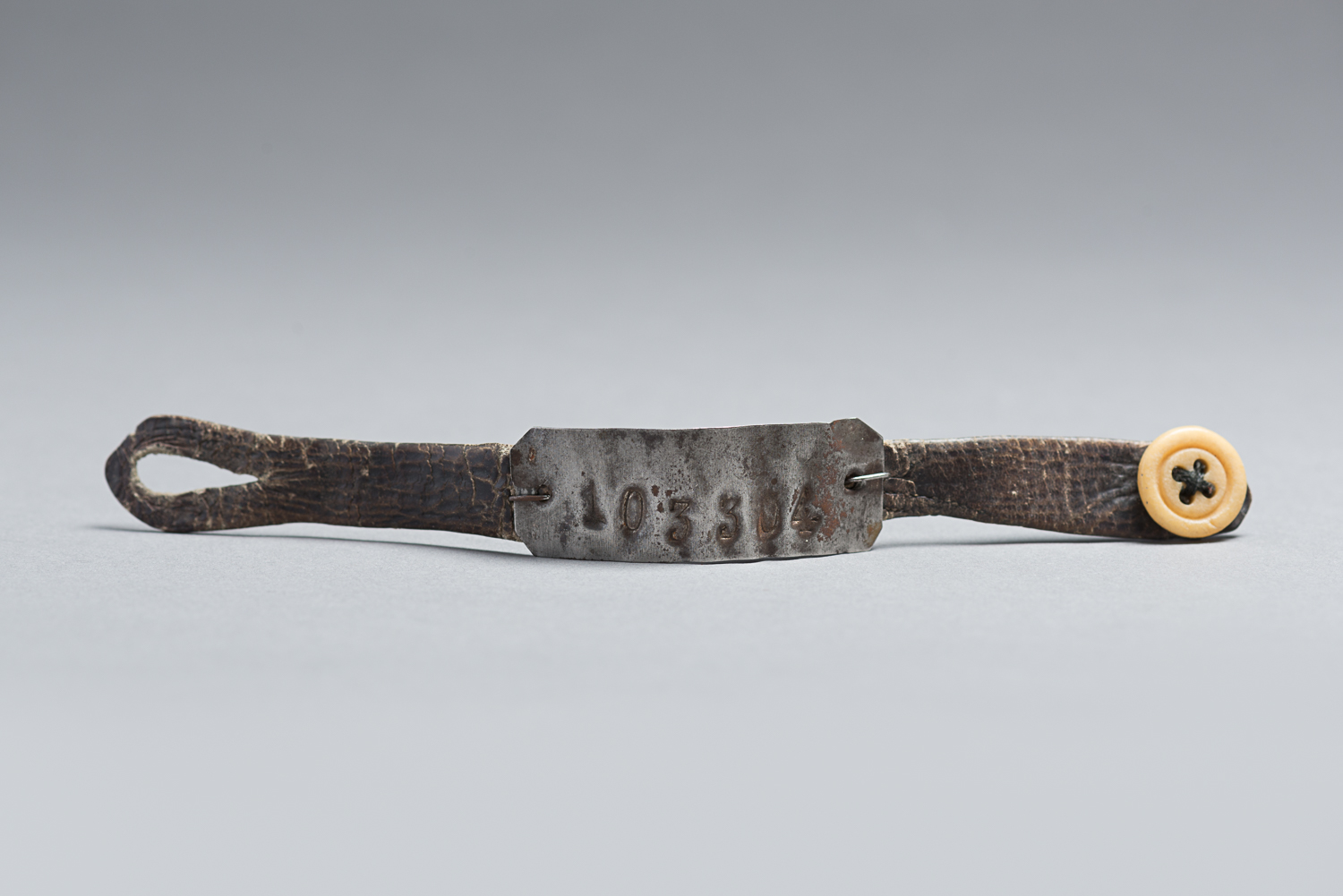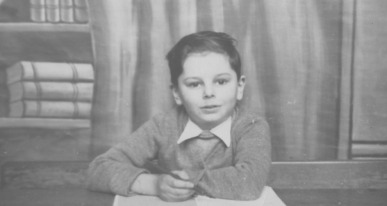These earmuffs are covered with two pieces of the same blue-and-white fabric as prisoners’ uniforms. It was worn by Israel Viezel as protection from the elements when he was working in forced labour camps.
Israel Viezel: Prisoner at Auschwitz-Birkenau and Buchenwald Camps
Israel Viezel lived in Hungary and was studying to become a rabbi when Germany invaded. On May 3, 1944, Israel was one of 8,638 Jews from his hometown of Târgu Mures deported to Auschwitz. There, he was selected for forced labour and had to work in the forests surrounding the camp. He was later deported to Buchenwald. Israel survived the Holocaust, but his parents, two sisters and one brother were all killed in Auschwitz.
A New Start in Montreal
Israel Viezel immigrated to Canada and lived in New Brunswick before settling in Montreal. He worked in many restaurants before opening his own deli, “Israel Delicatessen”, on Decarie Boulevard. Due to highway construction in preparation for Expo 67, Israel was forced to close down his business. He visited his brother in Israel and met Talia, also a Holocaust survivor, who would later become his wife. They lived together in Montreal until Israel’s death in 1999.
Talia Viezel donated these earmuffs to the Montreal Holocaust Museum in 2013.
This project is part of the implementation of the Plan culturel numérique du Québec.